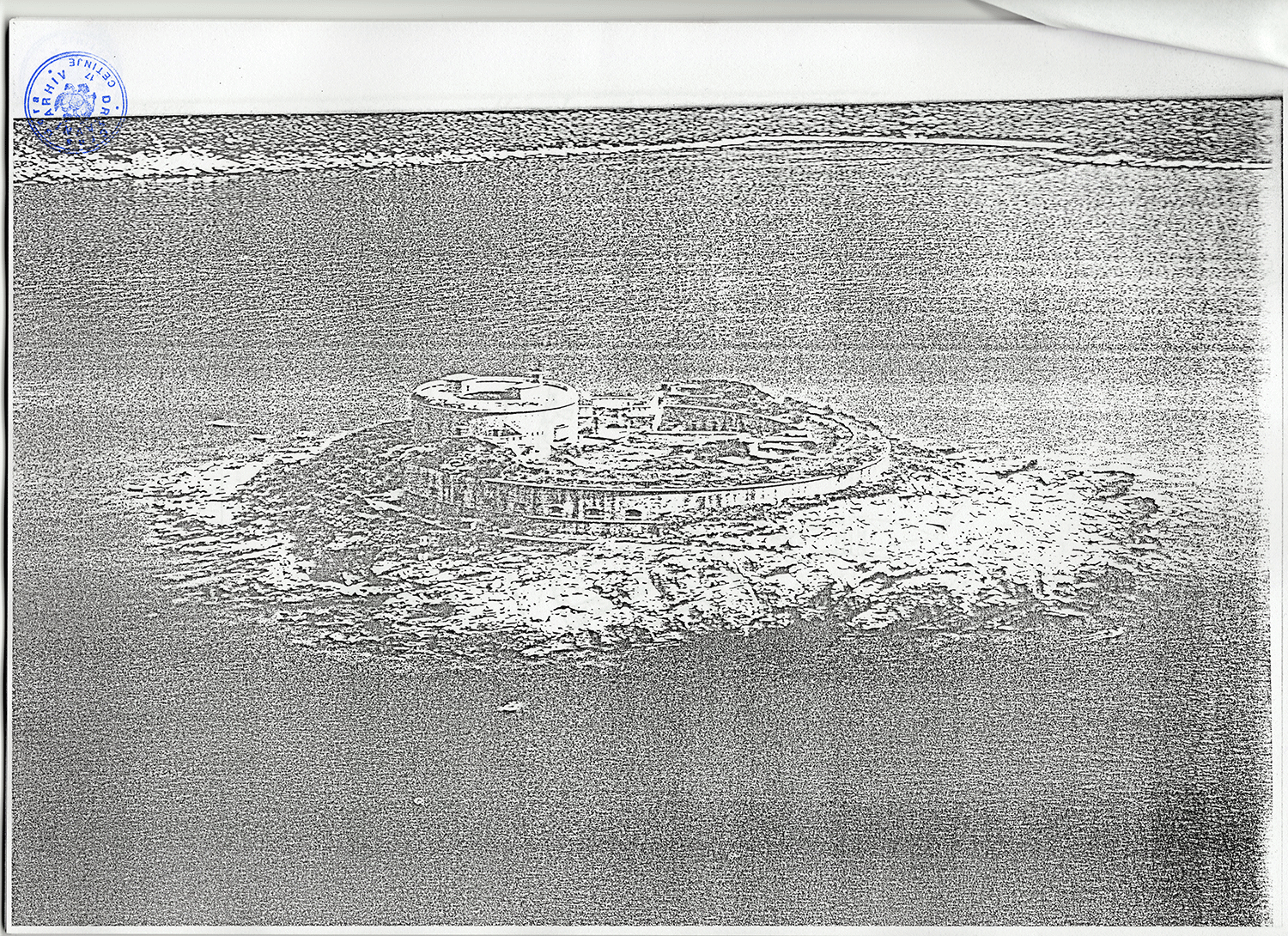It Takes an Island to Feel This Good
April 20–November 24, 2024
Commissioner: Vladislav Šćepanović
Curator: Ana Simona Zelenović
Organization: Museum of Contemporary Art of Montenegro
Event address: Complesso dell’Ospedaletto, Venice, Barbaria de le Tole
Darja Bajagić has been selected to represent Montenegro at the 60th International Venice Biennale in Venice in 2024. Her project, titled It Takes an Island to Feel This Good, curated by Ana Simona Zelenović and organized by the Museum of Contemporary Art of Montenegro at the initiative of commissioner Vladislav Šćepanović, will present a critical consideration of the culture of collective memory and our relationship to shared historical heritage. Through painting and sculpture, the artist will examine and reflect upon these themes, focusing on the complex and multidimensional history of the Montenegrin island of Mamula. Bajagić has spent two years researching Mamula’s history, specifically changes in its rule and function, in Montenegrin state archives; this collected material serves as the starting point for the artist’s visual compositions. The iconography of the paintings will combine the aforementioned archival material with distinctive referential and symbolical interventions, characteristic of Bajagić’s work.
In her decade-long practice, Bajagić explores the ambivalence of the image, that is, dualistic representation, symbolism, and meaning. Referencing a diverse range of sources, such as dark-web sites, news media content, and religious histories, to name a few, her works—complex iconographical representations that are composed of layers of contemplated phenomena—unravel and develop before us in stages. Writing on the work of Bajagić, Ingrid Luquet-Gad said, “That the work does not contain, at its core, a fixed meaning, one that could simply be unveiled, is both the cursed power and subversive force of her oeuvre.”
Bajagić and her project correspond to and build upon the theme of the 60th Venice Biennale, titled Stranieri Ovunque—Foreigners Everywhere, curated by Adrian Pedrosa, in numerous ways. Contextually, the Mamula fort is categorically linked to the idea of “foreign” seeing as it was built by the Austro-Hungarian Empire, obtaining its present-day name after the general who oversaw its construction; converted into a concentration camp by the fascist forces of Benito Mussolini’s Kingdom of Italy during World War II; and revitalized, beginning in 2016, with the assistance of foreign investments. As such, the project raises critical and pertinent philosophical questions about the position of the Other, investigating how the determination of this position determines power relations in society as well as over discourse. Furthermore, the project concept rests on Italian philosopher Giorgio Agamben’s politico-philosophical analysis of modernity.
Utilizing Mamula’s history and present-day-state as content, Bajagić’s It Takes an Island to Feel This Good will seek to raise pressing universal questions that are relevant and significant to contemporary art and greater society. By focusing on laden contemporary and historical issues, Bajagić courageously delves into and tackles complex issues, positing questions such as whether the precondition for evil is, on the one hand, the neglectful disregard of history or, on the other hand, its commodification.
Darja Bajagić was born in 1990 in Podgorica, Montenegro, and raised in Egypt and the United States. In 2014, Bajagić became the first national of Montenegro to graduate with a Master of Fine Arts from the Yale University School of Art. Selected institutional solo exhibitions include Goregeous, Le Confort Moderne, Poitiers, France (2020); Born Losers, Hessel Museum of Art, Annandale-on-Hudson, NY (2018); Unlimited Hate, Künstlerhaus, Halle für Kunst & Medien (KM-), Graz, Austria (2016). Selected institutional group exhibitions have taken place at National Gallery Prague, Czech Republic (2021); Casino Luxembourg (2020); Futura Centre for Contemporary Art, Prague, Czech Republic (2019); Es Baluard Museu d’Art Contemporani de Palma, Spain (2018); Contemporary Art Centre (CAC), Vilnius, Lithuania (2018); LUMA Westbau, Zürich (2017, 2015, 2014); Musée d’Art Moderne de Paris (2015); Moderna Museet, Stockholm (2015); Museum of Modern Art Warsaw (2014); Museum of Contemporary Art of Oaxaca (2014); Museum of Applied Arts (MAK), Vienna (2013). Her work has been included in the 42nd Montenegrin Salon of Visual Arts, Cetinje, Mexico (2020); the 57th October Salon, Belgrade, Serbia (2018); and the 13th Baltic Triennial of International Art, Vilnius, Lithuania (2018).



